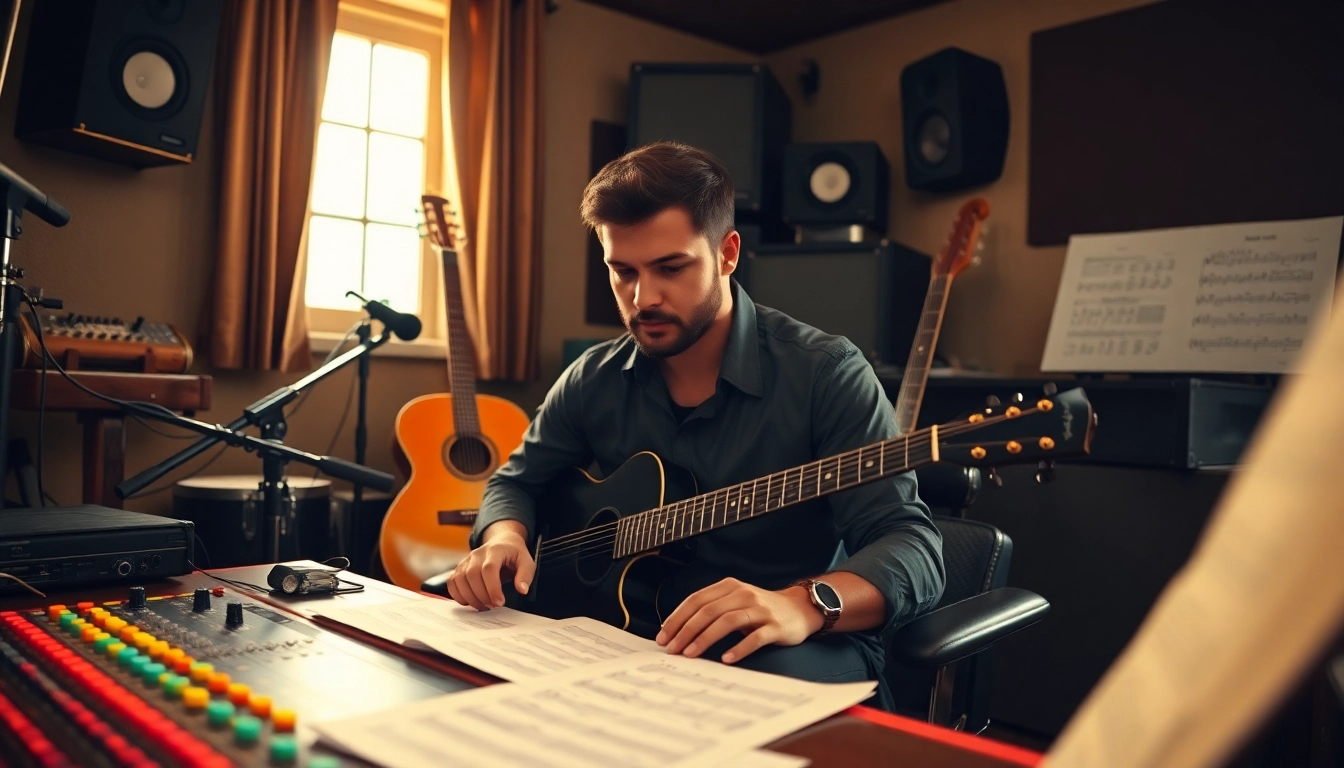Understanding the Basics of Music Pitching
Music pitching is an essential process for artists and songwriters who aspire to get their music heard and promoted on various platforms. To navigate the competitive landscape of the music industry effectively, understanding the ins and outs of music pitching is crucial. This guide aims to delve deeply into the nuances of music pitching, offering insights and strategies that can elevate your music career.
What is Music Pitching?
At its core, music pitching refers to the act of promoting your music to curators, media outlets, bloggers, and influencers, with the aim of gaining exposure and opportunities for performances, playlists, and features. This process can range from submitting tracks to Spotify playlist editors to approaching music blogs for reviews. In a digital age where independent artists can directly interact with audiences, the importance of pitching has evolved, emphasizing a more personalized approach.
The Importance of a Strong Music Pitch
A compelling music pitch can be the difference between obscurity and visibility. A strong pitch not only highlights the uniqueness of your sound but also captures the listener’s attention in an era where countless tracks are released daily. By articulating your musical vision and connecting it with the audience’s interests, you build a bridge that can lead to collaborative opportunities, increased streams, and a growing fanbase.
Overview of the Music Pitching Process
The music pitching process involves several key stages, including research, developing your unique selling proposition, crafting the pitch, and following up. Each stage requires careful consideration of your target audience and the appropriate mediums to reach them. Understanding the comprehensive nature of this process allows artists to position their music in the best light possible.
Key Elements of an Effective Music Pitch
Crafting an effective music pitch requires an amalgamation of creativity and strategy. Here are the critical elements that can make or break your pitch.
Crafting a Compelling Message
Every effective pitch begins with a strong message. This should include the essence of your music, your artistic journey, and what makes your work stand out. Consider incorporating storytelling elements that resonate with potential listeners. Your message shouldn’t just convey facts; it should evoke emotions and paint a vivid picture of your artistic persona.
Targeting the Right Audience
Understanding your audience is paramount in any marketing strategy, and music pitching is no exception. Tailor your pitches to fit the preferences of specific curators or platforms. Research the kind of content that curators share and engage with, and ensure your music aligns with their established standards and audience expectations. This personalization demonstrates respect for the curator’s time and increases the likelihood of a positive response.
Utilizing Data to Enhance Your Pitch
Data-driven insights can significantly enhance your music pitch. Use metrics from your streaming platforms to inform your storytelling; this could include statistical achievements like the number of streams, geographical listener demographics, or social media engagement metrics. Presenting hard data alongside your narrative illustrates your track record and potential, making your pitch more compelling.
Platforms and Tools for Music Pitching
With the advent of technology, a myriad of platforms and tools are available to assist in the music pitching process. Here are some noteworthy resources:
Analyzing Submission Platforms
Several platforms facilitate music submission to playlists and blogs, such as SubmitHub and Groover. These platforms offer a streamlined process for connecting with curators. Analyze the submission guidelines and audience of each platform to determine where your music fits best. Detailed analysis ensures you use your time efficiently and target the right curators.
Best Tools for Promoting Your Music
Beyond submission platforms, countless tools can help promote your music. Utilizing social media management tools like Hootsuite or Buffer can help you plan your promotional campaigns while maintaining a consistent online presence. Additionally, analytics tools such as Spotify for Artists can provide insights into your audience and track performance.
Leveraging Social Media for Engagement
Social media is a powerful tool for musicians looking to engage with their followers and promote their music. Platforms like Instagram, TikTok, and Twitter can foster community and directly connect with fans. Use these platforms to share snippets of new music, behind-the-scenes content, or even engage in live Q&A sessions to build a personal connection with your audience.
Common Mistakes in Music Pitching and How to Avoid Them
While music pitching is an art, it can be fraught with pitfalls. Here are some common errors and how to sidestep them:
Over-Pitching: Finding the Balance
One of the most common mistakes artists make is over-pitching. While it’s essential to be proactive, bombarding curators with frequent pitches can lead to fatigue and irritation. Instead, take a more calculated approach. Quality over quantity should be your mantra. Submit only when you have something new and significant to share.
Neglecting Follow-Up Communications
Following up on your pitch is crucial. However, the manner in which you do so is critical. Be respectful of the curator’s time and provide a gentle reminder after a reasonable period, usually a week or two. Craft your follow-up message to be courteous, reiterating your enthusiasm and offering any additional information if required.
Ignoring Feedback and Adaptation
The music industry is ever-evolving, and so too should your strategies. Taking feedback seriously and adapting your approach is vital for long-term success. If a curator provides constructive criticism or vague feedback, use it to refine future pitches. Demonstrating growth and adaptability can set you apart in a competitive landscape.
Measuring Success in Music Pitching
Assessing the effectiveness of your music pitching strategies is essential for continuous improvement. Here are key areas to focus on:
Tracking Engagement and Response Metrics
Keep track of response metrics from your pitches. This includes whether the curator listened to your track, if they provided feedback, or if they featured your music. By recording these metrics, you can discern patterns and adjust your strategy in real-time. Metrics such as Spotify streams or social media engagement following a pitch can also indicate effectiveness.
Adjusting Strategies Based on Performance Data
Analyze your performance data regularly. For example, if you notice that certain types of music or pitches lead to higher engagement, double down on those successes. Conversely, if particular pitches are consistently ignored, reassess your approach. Adjusting your pitch strategy based on data can help align your music more effectively with audience preferences.
Long-Term Relationship Building with Curators
Finally, view music pitching as an opportunity to build long-term relationships rather than a one-off transaction. Regular interaction, even when pitches are unsuccessful, can foster rapport with curators. Engage with their content, share their posts, and express appreciation for their work. Over time, this can develop into a mutually beneficial relationship that opens doors for future pitches.



